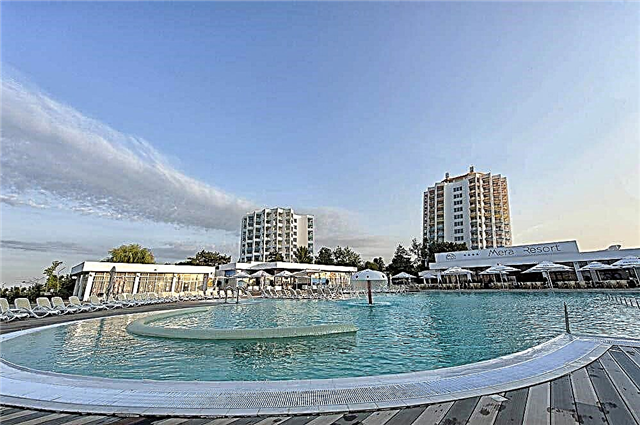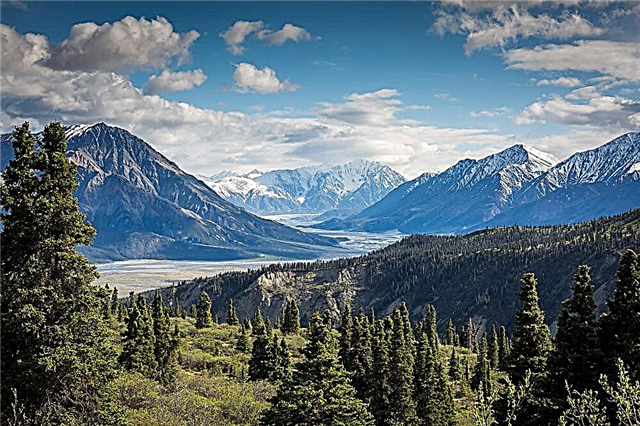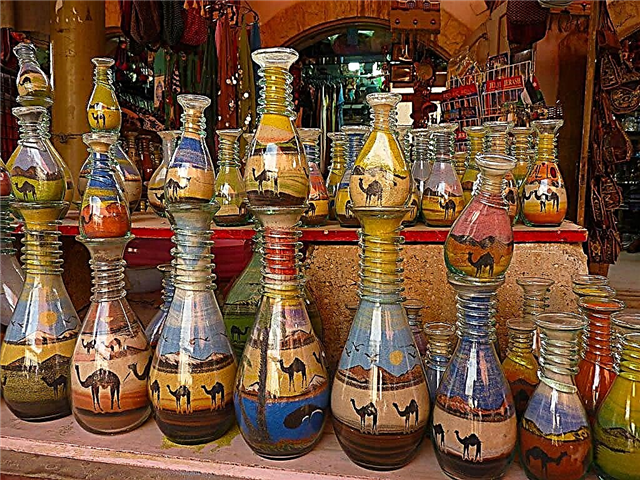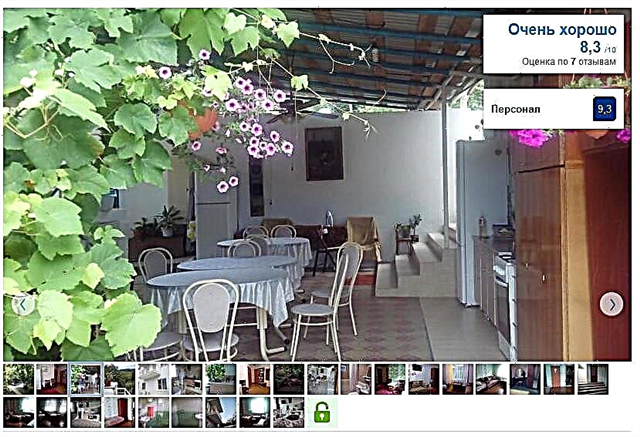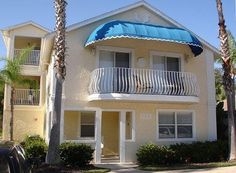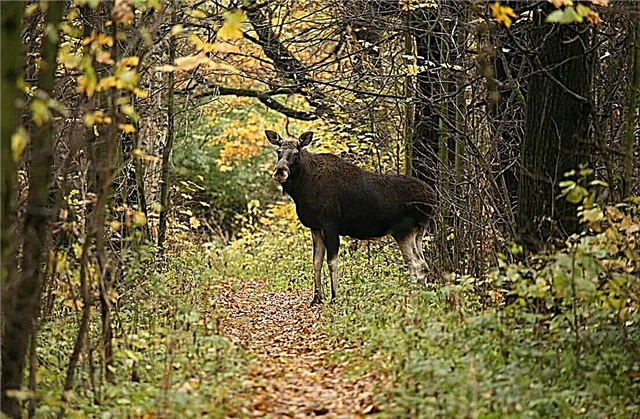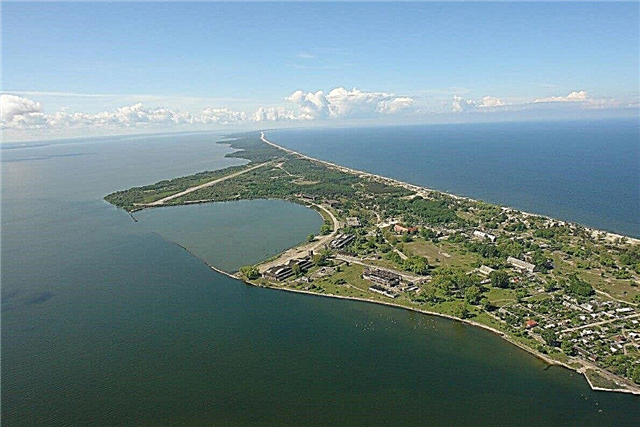The Kaliningrad region is a unique territorial entity, the so-called exclave: in the absence of a land border, it has a sea connection with Russia. The main owners were previously the Germans, who had settled down tightly after the capture of Prussia by the Teutonic Order. German heritage is present everywhere: from the architecture of the cities to the ancient forts scattered around the area.
Historical tourism associated with the events of the long past and the last world war is developed here. The seaside location and the abundance of lakes, combined with the mild climate, guarantee an excellent beach holiday and an unforgettable fishing trip. For lovers of wild tourism, there are a lot of secluded places, and those who prefer a traditional resort vacation can easily find a place in a hotel or at a camp site.
The most interesting and beautiful places in the region
List, photos with names and descriptions of attractions that are worth seeing!
National Park "Curonian Spit"
A unique natural and anthropogenic formation, which became a World Heritage Site in 2000. The object is 98 kilometers long and 400-3800 meters wide, which has collected several completely different landscapes: from a tundra swamp to a sandy desert. People come here to watch the flight of birds and visit sandy beaches: on one side of the spit there are sea beaches, on the other - a freshwater bay.

Don't miss: 20 interesting sights of the Curonian Spit. The Curonian Spit is almost always reached with a visit to Kaliningrad, so the article will be useful to you: 45 main attractions of Kaliningrad.
Cathedral in Kaliningrad
This now inoperative church has managed to be Catholic and Lutheran. One of the rare representatives of Gothic architecture for Russia, which has become a symbol of Kaliningrad. After the war, its ruins were almost demolished, and the cathedral was saved by the grave of Kant located here. The restoration began in 1992, so that all the interior decoration and most of the buildings are a remake, but carefully restored from pre-war photo archives.

Fishing village
The must-see pearl of Kaliningrad. A quarter of the city completely restored in the Prussian pre-war style, a grandiose historical and ethnographic complex. This piece of old Koenigsberg has concentrated several museums, hotels, exhibition centers, catering establishments and places of walking. There is only one inconvenience: it is simply impossible to get around everything in a day;

Svetlogorsk promenade and beach
The embankment of Svetlogorsk is not just a fortified and ennobled coastal strip, but a real entertainment complex with many cafes, concert venues and cozy nooks. Completely rebuilt after the 2012 storm that destroyed the structure. Now the beach is being washed up behind the promenade and quite successfully: a dozen meters have already been recaptured from the harsh Baltic. The main attraction of the embankment is several sculptural compositions.

Promenade and beach in Yantarny
The Yantarny promenade is unique: it partially runs over water. Two kilometers of a wooden bridge made of Siberian larch crosses a flooded amber quarry with swan families living there and abuts against a sandy beach. The latter is fully landscaped: from toilets and cafes to a green seating area surrounded by foliage and decks to move. The sand is snow-white, the beach itself is in perfect order and cleanliness.

City gates of Kaliningrad
There are as many as seven of them in Kaliningrad, and all of them are unique, albeit built in the same Gothic style. The gates are surrounded by the historic center of the city, where the fortress wall used to pass. The distance between the sights is relatively small, it is quite covered on foot. If you don't want to walk a lot, you can order a special bus tour.

Baltic Spit
It is also called Vistula, as the Poles call it, on the territory of which there are 30 km of natural object out of the total 65. It is a sand dune overgrown with mixed forest. The Russian part is separated by a navigable strait, so you will have to get there by water (motorboat or ferry). Tourism here is mostly wild, although there is a camp site. People come to swim and relax, as well as visit abandoned German military facilities.

Vishtynetskoe lake
Deep-water lake, nicknamed "European Baikal". Its waters abound in fish, including valuable species, such as the European eel and burbot, the coastal thickets - in birds. Several bases and camps are scattered along the shores, people come here to fish and just relax on wild sandy beaches with white sand. Here is the perfect freshwater diving - the water is phenomenal transparency.

Dancing forest
This artificial pine forest near the Curonian Spit got a strange name because of the twisted, sometimes coiled, tree trunks. But nothing supernatural: the reason for this is the caterpillars, which damaged the seedlings and provoked non-standard growth. Now thousands of trees seem to perform an intricate dance. Here are the ruins of the pre-war school of German glider pilots.

Müller height
The hill among the forests of the Curonian Spit is named after the forester Müller, who came up with a way to stop the spread of dunes and the transformation into a sandy desert of the entire coastal area. At the highest point there is an observation deck, from which you can admire the works of a German who saved the unique nature of the region more than a century ago. You can get there by car or from Kaliningrad by regular bus to the village of Morskoye.

Citadel "Pillau"
An old Swedish fort of the 17th century near Baltiysk. Visiting the fortress is fraught with some difficulties. So during naval exercises, access is closed. Visiting exclusively by excursion groups formed in the Baltic Fleet Museum. The fort has a rich history. During the Second World War, the impregnable citadel was taken by storm by Soviet soldiers, you can assess the degree of feat even with a cursory examination of the impressive ruins.

Fort number 3 - King Frederick William I
A powerful fort built in 1879, defending Konigsberg. So far, you can only view the fortress from the outside - restoration work has been going on for a long time. In addition to a rich purely military history, a real detective story is also associated with the citadel: according to rumors, the treasures of the Prussian Museum were hidden in its secret dungeons. Many treasure hunters dream of wandering through its casemates in search of valuables.

Fort number 5 - King Frederick William III
The garrison of this fort built at the end of the 19th century put up fierce resistance during the Second World War, because the building itself was actually destroyed. Several casemates and bunkers survived. Now there is a memorial in honor of Soviet soldiers and an outdoor exposition of weapons systems that took part in the assault. Every spring, a historical reconstruction is carried out on the territory, dedicated to the capture of the fort.

Museum of the World Ocean
Located in Kaliningrad, a marine museum covering everything related to the sea: from fauna, hydrology and navigation to the history of navigation, including a thematic library and a functioning eco-station. There are both small exhibits and real ships, submarines and whale skeletons. Conferences are held at the museum, scientific work is carried out and several clubs operate.

Baltic Fleet Museum
Located in Baltiysk, located in the former Pillau court, building in 1903. The whole history of the Baltic seafaring is presented in the museum. The funds contain about 20 thousand exhibits, including photographs, documents, uniforms, weapons and ship models.In some of the halls, the ship premises are reproduced: sailors' quarters, cabins of naval officers, warheads of ships.

Amber Museum in Kaliningrad
The expositions of the museum are devoted to everything connected with amber. Among the tens of thousands of exhibits, there is the largest "sun stone" in the world, as well as works of art of various directions: mosaic panels, exquisite carvings. Of particular interest is the collection of "frozen time": insects stuck millions of years ago in resin drops and even small animals and restored elements of the Amber Room.

Museum and Exhibition Complex "Amber Castle"
The village of Yantarny, where the museum is located, is located near the Baltic amber deposit, which contains 90% of its world reserves. It is dedicated to aspects of sunstone mining and its development. The peculiarity of the institution: it has a shop where you can buy amber products: souvenirs, costume jewelry. Exhibitions and auctions are also held here, where they sell expensive copyright works of art.

Svetlogorsk cable car
The slopes to the sea in the resort Svetlogorsk are steep, even using the equipped paths to get to the beaches is problematic. But thanks to the hilly terrain, it was possible to equip the cable car, which has become a local landmark. The funicular connects the beach and the Svetlogorsk-2 station. The length is 175 meters one way, there are 20 cabins with a capacity for two adults (160 kg).

Water tower in Svetlogorsk
Water reservoir at the Svetlogorsk water and mud baths. Built by the architect Otto Kukukk in 1907, it was used to supply water collected from the healing springs near the Mill Pond to the treatment facilities. There is an observation deck under the roof of the building, where an amazing view opens from a height of 25 meters. The tower is equipped with a sundial by a local artist

Kaliningrad Zoo
Discovered by the Germans in 1896 as a small zoo. It closed in the First World War, but received the greatest damage after the Second, when only 4 pets survived. The USSR rebuilt this large European zoo from scratch. Now there are more than 3500 animals of about 300 species, including the Red Data Book. There is an oceanarium, a serpentarium, collections of insects, amphibians, birds, open-air cages with large mammals.

Church of the Sagrada Familia
The former Catholic Church, now the Kaliningrad Philharmonic. Its peculiarity is the presence of an organ with 3600 pipes, giving out 44 registers. Organ concerts are held here and musicians are trained to play this complex instrument. The interior was originally thought to improve the acoustics, because the local organ produces a sound of stunning clarity, resonating with the room, which is appreciated by lovers of such music.

Kircha Juditten
Catholic church, which later became an evangelical parish church, and now an Orthodox convent and at the same time a historical monument. It was built by the knights of the Teutonic Order. Accessible to parishioners and tourists. On the territory there is a charitable refectory, a sewing workshop, a blacksmith, and a Sunday school. The most popular parish among religious Kaliningraders.

Pillau lighthouse in Baltiysk
Active 33-meter lighthouse in the harbor of Baltiysk. It has been preserved since 1902 in an almost unchanged form, because it was not damaged during the Second World War, the retreating Germans only spoiled the equipment. There have always been problems with the ascent to the observation deck: it is forbidden, then it is allowed again. Therefore, most likely, you will only be able to admire the monumental structure from the side, at its foot.

Insterburg Castle
Castle of the Teutonic Order founded in 1336. It was rebuilt several times after the destruction during the wars. It was seriously damaged in a fire in 1949, now it has been partially restored by enthusiasts. A historic medieval camp is open on the territory. There is a museum exposition, a large-scale diorama, a working smithy. It regularly becomes a venue for reenactments of medieval battles.

Amalienau historic district in Kaliningrad
The old district of Konigsberg, slightly affected by the war, therefore, has retained the authenticity of a German town at the beginning of the last century. True, most of the old houses are a stylized remake, but the streets of the district convey the spirit of Kaiser's Germany perfectly. You can go around the block on your own, but it is better as part of a tour: the guide will find something to tell you about the history of the gingerbread houses region.

Königsberg Stock Exchange building
This imposing building differs significantly from traditional German architecture. It was built by the Bremen-based architect Müller, but it is made in the style of the Italian neo-Renaissance. The building, which was bombed during the war, was restored, completely preserving the design of the facade, but the interior decoration was changed: there was no longer the need for a huge internal trading floor.

Cathedral of Christ the Savior in Kaliningrad
A new temple in the style of Vladimir-Suzdal architecture. The first built Orthodox church in the region, all other religious buildings are former German churches. Accommodates up to 3,000 parishioners, there is a parish school, a conference hall, a refectory on the territory. It is a temple of military glory in memory of Russian soldiers who perished near Konigsberg for several centuries.

Queen Louise Bridge in Sovetsk
Border bridge that connects Russian Sovetsk and Lithuanian Panyamune. In 1944, the building was blown up by the retreating Nazis, and Soviet engineers had to restore it. The bridge was given the features of the original, replacing only some of the details, for example, the bas-relief with the profile of Queen Louise on the arch changed the coat of arms of the USSR. After the restoration in 2002, the building was completely restored to its original appearance.

Variety Theater "Yantar Hall"
A modern concert complex on the Baltic coast in Svetlogorsk. In addition to a 2000-seat concert hall with an equipped orchestra pit, there is a cinema, a huge conference hall, cultural, business and restaurant parts. There was a place for a branch of the Maritime Museum. The theater built in 2015 is grandiose: marble and granite are everywhere adjacent to high-tech elements of metal and glass.

Lake Tikhoye in Svetlogorsk
A shallow artificial lake created by the Teutonic knights. It is surrounded by a park and is a favorite vacation spot for Solnechnogorsk families. Here you can rent a boat or catamaran, sit in the shade by the shore or go for a jog around the reservoir. It is true that swimming in it is not particularly recommended: the bottom has not been cleaned for a long time, and in some places it is seriously littered. Moreover, the depth rarely exceeds a meter.


